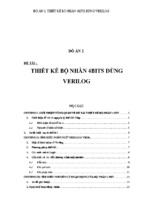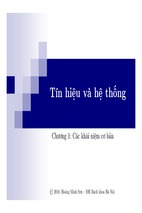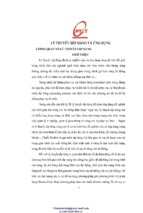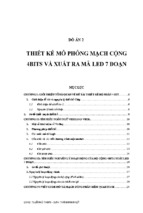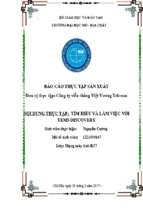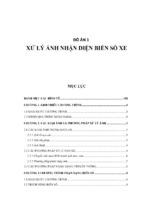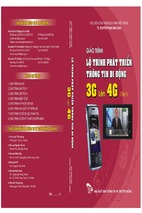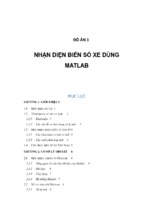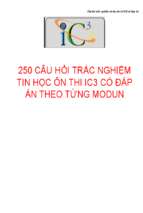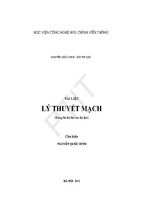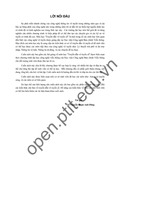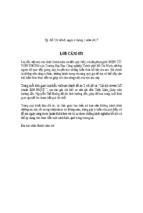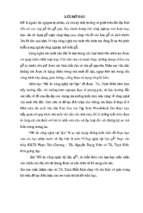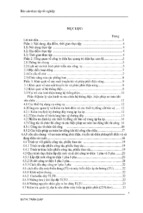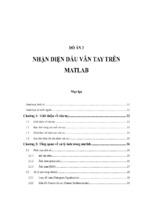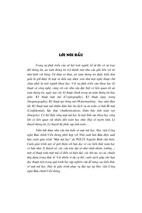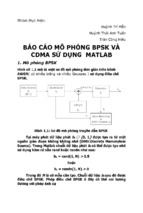3G EVOLUTION: HSPA AND LTE FOR MOBILE BROADBAND
This page intentionally left blank
3G Evolution
HSPA and LTE for Mobile Broadband
Erik Dahlman, Stefan Parkvall, Johan Sköld and Per Beming
AMSTERDAM • BOSTON • HEIDELBERG • LONDON • NEW YORK • OXFORD
PARIS • SAN DIEGO • SAN FRANCISCO • SINGAPORE • SYDNEY • TOKYO
Academic Press is an imprint of Elsevier
Academic Press is an imprint of Elsevier
Linacre House, Jordan Hill, Oxford, OX2 8DP
84 Theobald’s Road, London WC1X 8RR, UK
30 Corporate Drive, Burlington, MA 01803
525 B Street, Suite 1900, San Diego, California 92101-4495, USA
First edition 2007
Copyright © 2007. Erik Dahlman, Stefan Parkvall, Johan Sköld and Per Beming. Published by Elsevier
Ltd. All rights reserved
The right of Erik Dahlman, Stefan Parkvall, Johan Sköld and Per Beming to be identified as the authors
of this work has been asserted in accordance with the Copyright, Designs and Patents Act 1988
No part of this publication may be reproduced, stored in a retrieval system or transmitted in any form or
by any means electronic, mechanical, photocopying, recording or otherwise without the prior written
permission of the publisher
Permission may be sought directly from Elsevier’s Science & Technology Rights Department in Oxford,
UK: phone (+44) (0) 1865 843830; fax (+44) (0) 1865 853333; email:
[email protected].
Alternatively you can submit your request online by visiting the Elsevier web site at
http://elsevier.com /locate/permissions, and selecting Obtaining permission to use Elsevier material
Notice
No responsibility is assumed by the publisher for any injury and/or damage to persons or property as a
matter of products liability, negligence or otherwise, or from any use or operation of any methods,
products, instructions or ideas contained in the material herein. Because of rapid advances in the medical
sciences, in particular, independent verification of diagnoses and drug dosages should be made
British Library Cataloguing in Publication Data
3G evolution : HSPA and LTE for mobile broadband
1. Broadband communication systems – Standards 2. Mobile
communication systems – Standards 3. Cellular telephone
systems – Standards
I. Dahlman, Erik
621.3’8456
Library of Congress Number: 2007925578
ISBN: 9780123725332
For information on all Academic Press publications
visit our web site at books.elsevier.com
Typeset by Charon Tec Ltd (A Macmillan Company), Chennai, India,
www.charontec.com
Printed and bound in Great Britain
07
08
09
10
11
10
9
8 7
6 5 4 3 2 1
Contents
List of Figures
xiii
List of Tables
xxiii
Preface
xxv
Acknowledgements
xxvii
List of Acronyms
xxix
Part I: Introduction
1
Background of 3G evolution
3
1.1 History and background of 3G . . . . . . . . . . . . . . . . . . . . . . . . . . . . . . . . . . . 3
1.1.1 Before 3G . . . . . . . . . . . . . . . . . . . . . . . . . . . . . . . . . . . . . . . . . . . . . . . 3
1.1.2 Early 3G discussions . . . . . . . . . . . . . . . . . . . . . . . . . . . . . . . . . . . . . 5
1.1.3 Research on 3G . . . . . . . . . . . . . . . . . . . . . . . . . . . . . . . . . . . . . . . . . . 6
1.1.4 3G standardization starts . . . . . . . . . . . . . . . . . . . . . . . . . . . . . . . . . . 7
1.2 Standardization . . . . . . . . . . . . . . . . . . . . . . . . . . . . . . . . . . . . . . . . . . . . . . . . . 7
1.2.1 The standardization process . . . . . . . . . . . . . . . . . . . . . . . . . . . . . . . 7
1.2.2 3GPP . . . . . . . . . . . . . . . . . . . . . . . . . . . . . . . . . . . . . . . . . . . . . . . . . . . 8
1.2.3 IMT-2000 activities in ITU . . . . . . . . . . . . . . . . . . . . . . . . . . . . . . . 11
1.3 Spectrum for 3G . . . . . . . . . . . . . . . . . . . . . . . . . . . . . . . . . . . . . . . . . . . . . . . 12
2
The motives behind the 3G evolution
17
2.1 Driving forces . . . . . . . . . . . . . . . . . . . . . . . . . . . . . . . . . . . . . . . . . . . . . . . . . 17
2.1.1 Technology advancements . . . . . . . . . . . . . . . . . . . . . . . . . . . . . . . 18
2.1.2 Services . . . . . . . . . . . . . . . . . . . . . . . . . . . . . . . . . . . . . . . . . . . . . . . . 19
2.1.3 Cost and performance . . . . . . . . . . . . . . . . . . . . . . . . . . . . . . . . . . . 21
2.2 3G evolution: two Radio Access Network approaches and
an evolved core network . . . . . . . . . . . . . . . . . . . . . . . . . . . . . . . . . . . . . . . . 23
2.2.1 Radio Access Network evolution . . . . . . . . . . . . . . . . . . . . . . . . . 23
2.2.2 A evolved core network: System Architecture
Evolution . . . . . . . . . . . . . . . . . . . . . . . . . . . . . . . . . . . . . . . . . . . . . . 26
Part II: Technologies for 3G Evolution
3
High data rates in mobile communication
31
3.1 High data rates: fundamental constraints . . . . . . . . . . . . . . . . . . . . . . . . . 31
3.1.1 High data rates in noise-limited scenarios . . . . . . . . . . . . . . . . . . 33
v
vi
Contents
3.1.2 Higher data rates in interference-limited scenarios . . . . . . . . . . 35
3.2 Higher data rates within a limited bandwidth: higher-order
modulation. . . . . . . . . . . . . . . . . . . . . . . . . . . . . . . . . . . . . . . . . . . . . . . . . . . . 36
3.2.1 Higher-order modulation in combination with
channel coding . . . . . . . . . . . . . . . . . . . . . . . . . . . . . . . . . . . . . . . . . 37
3.2.2 Variations in instantaneous transmit power . . . . . . . . . . . . . . . . . 38
3.3 Wider bandwidth including multi-carrier transmission . . . . . . . . . . . . . 39
3.3.1 Multi-carrier transmission . . . . . . . . . . . . . . . . . . . . . . . . . . . . . . . 41
4
OFDM transmission
45
4.1 Basic principles of OFDM . . . . . . . . . . . . . . . . . . . . . . . . . . . . . . . . . . . . 45
4.2 OFDM demodulation . . . . . . . . . . . . . . . . . . . . . . . . . . . . . . . . . . . . . . . . . 48
4.3 OFDM implementation using IFFT/FFT processing . . . . . . . . . . . . . 48
4.4 Cyclic-prefix insertion . . . . . . . . . . . . . . . . . . . . . . . . . . . . . . . . . . . . . . . . 51
4.5 Frequency-domain model of OFDM transmission . . . . . . . . . . . . . . . 53
4.6 Channel estimation and reference symbols . . . . . . . . . . . . . . . . . . . . . . 54
4.7 Frequency diversity with OFDM: importance of channel coding.. . . . . 55
4.8 Selection of basic OFDM parameters . . . . . . . . . . . . . . . . . . . . . . . . . . . 57
4.8.1 OFDM subcarrier spacing . . . . . . . . . . . . . . . . . . . . . . . . . . . . . . . 57
4.8.2 Number of subcarriers . . . . . . . . . . . . . . . . . . . . . . . . . . . . . . . . . 59
4.8.3 Cyclic-prefix length . . . . . . . . . . . . . . . . . . . . . . . . . . . . . . . . . . . . 59
4.9 Variations in instantaneous transmission power . . . . . . . . . . . . . . . . . . 60
4.10 OFDM as a user-multiplexing and multiple-access scheme . . . . . . . 61
4.11 Multi-cell broadcast/multicast transmission and OFDM . . . . . . . . . . 63
5
Wider-band ‘single-carrier’ transmission
67
5.1 Equalization against radio-channel frequency selectivity . . . . . . . . . 67
5.1.1 Time-domain linear equalization . . . . . . . . . . . . . . . . . . . . . . . . . 68
5.1.2 Frequency-domain equalization . . . . . . . . . . . . . . . . . . . . . . . . . . 70
5.1.3 Other equalizer strategies . . . . . . . . . . . . . . . . . . . . . . . . . . . . . . . 73
5.2 Uplink FDMA with flexible bandwidth assignment . . . . . . . . . . . . . . 73
5.3 DFT-spread OFDM . . . . . . . . . . . . . . . . . . . . . . . . . . . . . . . . . . . . . . . . . . . 75
5.3.1 Basic principles . . . . . . . . . . . . . . . . . . . . . . . . . . . . . . . . . . . . . . . . 75
5.3.2 DFTS-OFDM receiver . . . . . . . . . . . . . . . . . . . . . . . . . . . . . . . . . . 78
5.3.3 User multiplexing with DFTS-OFDM . . . . . . . . . . . . . . . . . . . . 79
5.3.4 DFTS-OFDM with spectrum shaping . . . . . . . . . . . . . . . . . . . . 80
5.3.5 Distributed DFTS-OFDM . . . . . . . . . . . . . . . . . . . . . . . . . . . . . . . 81
6
Multi-antenna techniques
83
6.1 Multi-antenna configurations . . . . . . . . . . . . . . . . . . . . . . . . . . . . . . . . . . 83
6.2 Benefits of multi-antenna techniques . . . . . . . . . . . . . . . . . . . . . . . . . . . 84
6.3 Multiple receive antennas . . . . . . . . . . . . . . . . . . . . . . . . . . . . . . . . . . . . . 85
6.4 Multiple transmit antennas . . . . . . . . . . . . . . . . . . . . . . . . . . . . . . . . . . . . 90
Contents
vii
6.4.1 Transmit-antenna diversity . . . . . . . . . . . . . . . . . . . . . . . . . . . . . . . 91
6.4.2 Transmitter-side beam-forming . . . . . . . . . . . . . . . . . . . . . . . . . . . 95
6.5 Spatial multiplexing . . . . . . . . . . . . . . . . . . . . . . . . . . . . . . . . . . . . . . . . . . . 98
6.5.1 Basic principles . . . . . . . . . . . . . . . . . . . . . . . . . . . . . . . . . . . . . . . . . 99
6.5.2 Pre-coder-based spatial multiplexing . . . . . . . . . . . . . . . . . . . . 102
6.5.3 Non-linear receiver processing . . . . . . . . . . . . . . . . . . . . . . . . . . 104
7
Scheduling, link adaptation and hybrid ARQ
107
7.1 Link adaptation: Power and rate control . . . . . . . . . . . . . . . . . . . . . . . . 108
7.2 Channel-dependent scheduling . . . . . . . . . . . . . . . . . . . . . . . . . . . . . . . . 109
7.2.1 Downlink scheduling . . . . . . . . . . . . . . . . . . . . . . . . . . . . . . . . . . . 110
7.2.2 Uplink scheduling . . . . . . . . . . . . . . . . . . . . . . . . . . . . . . . . . . . . . 114
7.2.3 Link adaptation and channel-dependent scheduling
in the frequency domain . . . . . . . . . . . . . . . . . . . . . . . . . . . . . . . . 117
7.2.4 Acquiring on channel-state information . . . . . . . . . . . . . . . . . . 117
7.2.5 Traffic behavior and scheduling . . . . . . . . . . . . . . . . . . . . . . . . . 119
7.3 Advanced retransmission schemes . . . . . . . . . . . . . . . . . . . . . . . . . . . . . 120
7.4 Hybrid ARQ with soft combining . . . . . . . . . . . . . . . . . . . . . . . . . . . . . . 121
Part III: HSPA
8
WCDMA evolution: HSPA and MBMS
129
8.1 WCDMA: brief overview . . . . . . . . . . . . . . . . . . . . . . . . . . . . . . . . . . . . . 131
8.1.1 Overall architecture . . . . . . . . . . . . . . . . . . . . . . . . . . . . . . . . . . . . 131
8.1.2 Physical layer . . . . . . . . . . . . . . . . . . . . . . . . . . . . . . . . . . . . . . . . . 134
8.1.3 Resource handling and packet-data session . . . . . . . . . . . . . . . 139
9
High-Speed Downlink Packet Access
141
9.1 Overview . . . . . . . . . . . . . . . . . . . . . . . . . . . . . . . . . . . . . . . . . . . . . . . . . . . . 141
9.1.1 Shared-channel transmission . . . . . . . . . . . . . . . . . . . . . . . . . . . . 141
9.1.2 Channel-dependent scheduling . . . . . . . . . . . . . . . . . . . . . . . . . . 142
9.1.3 Rate control and higher-order modulation . . . . . . . . . . . . . . . . 144
9.1.4 Hybrid ARQ with soft combining . . . . . . . . . . . . . . . . . . .. . . . . 144
9.1.5 Architecture . . . . . . . . . . . . . . . . . . . . . . . . . . . . . . . . . . . . . . . . . . . 144
9.2 Details of HSDPA . . . . . . . . . . . . . . . . . . . . . . . . . . . . . . . . . . . . . . . . . . . . 146
9.2.1 HS-DSCH: inclusion of features in WCDMA Release 5. . . . . 146
9.2.2 MAC-hs and physical-layer processing . . . . . . . . . . . . . . . . . . . 149
9.2.3 Scheduling . . . . . . . . . . . . . . . . . . . . . . . . . . . . . . . . . . . . . . . . . . . . 151
9.2.4 Rate control . . . . . . . . . . . . . . . . . . . . . . . . . . . . . . . . . . . . . . . . . . . 152
9.2.5 Hybrid ARQ with soft combining . . . . . . . . . . . . . . . . . . .. . . . . 155
9.2.6 Data flow . . . . . . . . . . . . . . . . . . . . . . . . . . . . . . . . . . . . . . . . . . . . . 158
viii
Contents
9.2.7 Resource control for HS-DSCH . . . . . . . . . . . . . . . . . . . . . . . . . 159
9.2.8 Mobility . . . . . . . . . . . . . . . . . . . . . . . . . . . . . . . . . . . . . . . . . . . . . . 162
9.2.9 UE categories . . . . . . . . . . . . . . . . . . . . . . . . . . . . . . . . . . . . . . . . . 163
9.3 Finer details of HSDPA . . . . . . . . . . . . . . . . . . . . . . . . . . . . . . . . . . . . . . . 164
9.3.1 Hybrid ARQ revisited: physical-layer processing . . . . . . . . . . 164
9.3.2 Interleaving and constellation rearrangement . . . . . . . . .. . . . . 168
9.3.3 Hybrid ARQ revisited: protocol operation . . . . . . . . . . . . . . . . 170
9.3.4 In-sequence delivery . . . . . . . . . . . . . . . . . . . . . . . . . . . . . . . . . . . 171
9.3.5 MAC-hs header . . . . . . . . . . . . . . . . . . . . . . . . . . . . . . . . . . . . . . . . 174
9.3.6 CQI and other means to assess the downlink quality . . . . . . . 175
9.3.7 Downlink control signaling: HS-SCCH . . . . . . . . . . . . . . . . . . 178
9.3.8 Downlink control signaling: F-DPCH . . . . . . . . . . . . . . . . . . . . 180
9.3.9 Uplink control signaling: HS-DPCCH . . . . . . . . . . . . . . . . . . . 181
10
Enhanced Uplink
185
10.1 Overview . . . . . . . . . . . . . . . . . . . . . . . . . . . . . . . . . . . . . . . . . . . . . . . . . . 185
10.1.1 Scheduling . . . . . . . . . . . . . . . . . . . . . . . . . . . . . . . . . . . . . . . 186
10.1.2 Hybrid ARQ with soft combining . . . . . . . . . . . . . . . . . . . 188
10.1.3 Architecture . . . . . . . . . . . . . . . . . . . . . . . . . . . . . . . . . . . . . . 189
10.2 Details of Enhanced Uplink . . . . . . . . . . . . . . . . . . . . . . . . . . . . . . . . . 190
10.2.1 MAC-e and physical layer processing . . . . . . . . . . . . . . . 193
10.2.2 Scheduling . . . . . . . . . . . . . . . . . . . . . . . . . . . . . . . . . . . . . . . 195
10.2.3 E-TFC selection . . . . . . . . . . . . . . . . . . . . . . . . . . . . . . . . . . . 202
10.2.4 Hybrid ARQ with soft combining . . . . . . . . . . . . . . . . . . . 203
10.2.5 Physical channel allocation . . . . . . . . . . . . . . . . . . . . . . . . . 208
10.2.6 Power control . . . . . . . . . . . . . . . . . . . . . . . . . . . . . . . . . . . . . 209
10.2.7 Data flow . . . . . . . . . . . . . . . . . . . . . . . . . . . . . . . . . . . . . . . . . 210
10.2.8 Resource control for E-DCH . . . . . . . . . . . . . . . . . . . . . . . 210
10.2.9 Mobility . . . . . . . . . . . . . . . . . . . . . . . . . . . . . . . . . . . . . . . . . . 212
10.2.10 UE categories . . . . . . . . . . . . . . . . . . . . . . . . . . . . . . . . . . . . . 212
10.3 Finer details of Enhanced Uplink . . . . . . . . . . . . . . . . . . . . . . . .. . . . . 213
10.3.1 Scheduling – the small print . . . . . . . . . . . . . . . . . . . . . . . . 213
10.3.2 Further details on hybrid ARQ operation . . . . . . . . . . . . . 222
10.3.3 Control signaling . . . . . . . . . . . . . . . . . . . . . . . . . . . . . . . . . 229
11
MBMS: multimedia broadcast multicast services
239
11.1 Overview . . . . . . . . . . . . . . . . . . . . . . . . . . . . . . . . . . . . . . . . . . . . . . . . . . 242
11.1.1 Macro-diversity . . . . . . . . . . . . . . . . . . . . . . . . . . . . . . . . . . . 242
11.1.2 Application-level coding . . . . . . . . . . . . . . . . . . . . . . . . . . . 245
11.2 Details of MBMS. . . . . . . . . . . . . . . . . . . . . . . . . . . . . . . . . . . . . .. . . . . 246
11.2.1 MTCH . . . . . . . . . . . . . . . . . . . . . . . . . . . . . . . . . . . . . .. . . . . 246
11.2.2 MCCH and MICH . . . . . . . . . . . . . . . . . . . . . . . . . . . . . . . . 248
11.2.3 MSCH . . . . . . . . . . . . . . . . . . . . . . . . . . . . . . . . . . . . . . . . . . . 249
Contents
12
ix
HSPA Evolution
251
12.1 MIMO . . . . . . . . . . . . . . . . . . . . . . . . . . . . . . . . . . . . . . . . . . . . . . . . . . . . 251
12.1.1 HSDPA-MIMO data transmission . . . . . . . . . . . . . . . . . . . 252
12.1.2 Rate control for HSDPA-MIMO . . . . . . . . . . . . . . . . . . . . 255
12.1.3 Hybrid ARQ with soft combining for HSDPAMIMO . . . . . . . . . . . . . . . . . . . . . . . . . . . . . . . . . . . . . .. . . . . 256
12.1.4 Control signaling for HSDPA-MIMO . . . . . . . . . . . . . . . 256
12.1.5 UE capabilities . . . . . . . . . . . . . . . . . . . . . . . . . . . . . . . . . . . . 258
12.2 Higher-order modulation . . . . . . . . . . . . . . . . . . . . . . . . . . . . . . . . . . . 259
12.3 Continuous packet connectivity . . . . . . . . . . . . . . . . . . . . . . . . .. . . . . 259
12.3.1 DTX – reducing uplink overhead . . . . . . . . . . . . . . .. . . . . 261
12.3.2 DRX – reducing UE power consumption . . . . . . . .. . . . . 263
12.3.3 HS-SCCH-less operation: downlink overhead
reduction . . . . . . . . . . . . . . . . . . . . . . . . . . . . . . . . . . . . . . . . . 264
12.3.4 Control signaling . . . . . . . . . . . . . . . . . . . . . . . . . . . . . . . . . 266
12.4 Enhanced CELL_FACH operation . . . . . . . . . . . . . . . . . . . . . . . . . . . 266
12.5 Layer 2 protocol enhancements . . . . . . . . . . . . . . . . . . . . . . . . .. . . . . 268
12.6 Advanced receivers . . . . . . . . . . . . . . . . . . . . . . . . . . . . . . . . . . . . . . . . 268
12.6.1 Advanced UE receivers specified in 3GPP . . . . . . . . . . . . 269
12.6.2 Receiver diversity (type 1) . . . . . . . . . . . . . . . . . . . . . . . . . . . 270
12.6.3 Chip-level equalizers and similar receivers (type 2). . . . . 270
12.6.4 Combination with antenna diversity (type 3) . . . . . . . . . . . 271
12.6.5 Interference cancellation . . . . . . . . . . . . . . . . . . . . . . . . . . . . 272
12.7 Conclusion . . . . . . . . . . . . . . . . . . . . . . . . . . . . . . . . . . . . . . . . . . . . . . . . 273
Part IV: LTE and SAE
13
LTE and SAE: introduction and design targets
277
13.1 LTE design targets . . . . . . . . . . . . . . . . . . . . . . . . . . . . . . . . . . . . . . . . . 278
13.1.1 Capabilities . . . . . . . . . . . . . . . . . . . . . . . . . . . . . . . . . . . . . . . . 278
13.1.2 System performance . . . . . . . . . . . . . . . . . . . . . . . . . . . . . . . . 279
13.1.3 Deployment-related aspects . . . . . . . . . . . . . . . . . . . . .. . . . . 281
13.1.4 Architecture and migration . . . . . . . . . . . . . . . . . . . . . . . . . . 283
13.1.5 Radio resource management . . . . . . . . . . . . . . . . . . . . . . . . . 284
13.1.6 Complexity . . . . . . . . . . . . . . . . . . . . . . . . . . . . . . . . . . . . . . . . 284
13.1.7 General aspects . . . . . . . . . . . . . . . . . . . . . . . . . . . . . . . .. . . . . 285
13.2 SAE design targets . . . . . . . . . . . . . . . . . . . . . . . . . . . . . . . . . . . . . . . . . 285
14
LTE radio access: an overview
289
14.1 Transmission schemes: downlink OFDM and uplink
SC-FDMA . . . . . . . . . . . . . . . . . . . . . . . . . . . . . . . . . . . . . . . . . . . . . . . . 289
14.2 Channel-dependent scheduling and rate adaptation . . . . . . . . . . . . 290
14.2.1 Downlink scheduling . . . . . . . . . . . . . . . . . . . . . . . . . . . . . . . 291
14.2.2 Uplink scheduling . . . . . . . . . . . . . . . . . . . . . . . . . . . . . . . . . . 292
Contents
x
14.3
14.4
14.5
14.6
14.2.3 Inter-cell interference coordination . . . . . . . . . . . . . . . . . . . 293
Hybrid ARQ with soft combining . . . . . . . . . . . . . . . . . . . . . . . . . . . . 294
Multiple antenna support . . . . . . . . . . . . . . . . . . . . . . . . . . . . . . . . . . . 294
Multicast and broadcast support . . . . . . . . . . . . . . . . . . . . . . . . . . . . . . 295
Spectrum flexibility . . . . . . . . . . . . . . . . . . . . . . . . . . . . . . . . . . . .. . . . . 295
14.6.1 Flexibility in duplex arrangement . . . . . . . . . . . . . . . . . . . . 296
14.6.2 Flexibility in frequency-band-of-operation . . . . . . . . . . . . 297
14.6.3 Bandwidth flexibility . . . . . . . . . . . . . . . . . . . . . . . . . . . . . . . 297
15
LTE radio interface architecture
299
15.1 RLC: radio link control . . . . . . . . . . . . . . . . . . . . . . . . . . . . . . . . . . . . . 301
15.2 MAC: medium access control . . . . . . . . . . . . . . . . . . . . . . . . . . . . . . . 302
15.2.1 Logical channels and transport channels . . . . . . . . . . . . . . 303
15.2.2 Downlink scheduling . . . . . . . . . . . . . . . . . . . . . . . . . . . . . . . 305
15.2.3 Uplink scheduling . . . . . . . . . . . . . . . . . . . . . . . . . . . . . . . . . . 307
15.2.4 Hybrid ARQ . . . . . . . . . . . . . . . . . . . . . . . . . . . . . . . . . .. . . . . 309
15.3 PHY: physical layer . . . . . . . . . . . . . . . . . . . . . . . . . . . . . . . . . . . . . . . . 312
15.4 LTE states . . . . . . . . . . . . . . . . . . . . . . . . . . . . . . . . . . . . . . . . . . . . . . . . . 314
15.5 Data flow . . . . . . . . . . . . . . . . . . . . . . . . . . . . . . . . . . . . . . . . . . . . . . . . . 315
16
LTE physical layer
317
16.1 Overall time-domain structure . . . . . . . . . . . . . . . . . . . . . . . . . . . . . . . 317
16.2 Downlink transmission scheme . . . . . . . . . . . . . . . . . . . . . . . . . . . . . . 319
16.2.1 The downlink physical resource . . . . . . . . . . . . . . . . . . . . . . 319
16.2.2 Downlink reference signals . . . . . . . . . . . . . . . . . . . . . . . . . . 323
16.2.3 Downlink transport-channel processing . . . . . . . . . . . . . . . 326
16.2.4 Downlink L1/L2 control signaling . . . . . . . . . . . . . . . . . . . 333
16.2.5 Downlink multi-antenna transmission . . . . . . . . . . . . . . . . 336
16.2.6 Multicast/broadcast using MBSFN . . . . . . . . . . . . . .. . . . . 339
16.3 Uplink transmission scheme . . . . . . . . . . . . . . . . . . . . . . . . . . . . . . . . 340
16.3.1 The uplink physical resource . . . . . . . . . . . . . . . . . . . .. . . . . 340
16.3.2 Uplink reference signals . . . . . . . . . . . . . . . . . . . . . . . . . . . . . 344
16.3.3 Uplink transport-channel processing . . . . . . . . . . . . . . . . . . 350
16.3.4 Uplink L1/L2 control signaling . . . . . . . . . . . . . . . . . . . . . . 351
16.3.5 Uplink timing advance . . . . . . . . . . . . . . . . . . . . . . . . .. . . . . 353
17
LTE access procedures
357
17.1 Cell search . . . . . . . . . . . . . . . . . . . . . . . . . . . . . . . . . . . . . . . . . . . . . . . . 357
17.1.1 Cell-search procedure . . . . . . . . . . . . . . . . . . . . . . . . . . . . . . . 357
17.1.2 Time/frequency structure of synchronization signals.. . . . 359
17.1.3 Initial and neighbor-cell search . . . . . . . . . . . . . . . . . .. . . . . 360
17.2 Random access . . . . . . . . . . . . . . . . . . . . . . . . . . . . . . . . . . . . . . . . . . . . 361
17.2.1 Step 1: Random access preamble transmission . . . . . . . . . 363
17.2.2 Step 2: Random access response . . . . . . . . . . . . . . . . . . . . . 367
17.2.3 Step 3: Terminal identification . . . . . . . . . . . . . . . . . . . . . . . 368
Contents
xi
17.2.4 Step 4: Contention resolution . . . . . . . . . . . . . . . . . . . . . . . . 368
17.3 Paging . . . . . . . . . . . . . . . . . . . . . . . . . . . . . . . . . . . . . . . . . . . . . . . . . . . . 369
18
System Architecture Evolution
371
18.1 Functional split between radio access network and core
network . . . . . . . . . . . . . . . . . . . . . . . . . . . . . . . . . . . . . . . . . . . . . .. . . . . 372
18.1.1 Functional split between WCDMA/HSPA radio
access network and core network . . . . . . . . . . . . . . . .. . . . . 372
18.1.2 Functional split between LTE RAN and core
network . . . . . . . . . . . . . . . . . . . . . . . . . . . . . . . . . . . . . . . . . . . 373
18.2 HSPA/WCDMA and LTE radio access network . . . . . . . . . . . . . . . 374
18.2.1 WCDMA/HSPA radio access network . . . . . . . . . . . . . . . . 374
18.2.2 LTE radio access network . . . . . . . . . . . . . . . . . . . . . . . . . . . 380
18.3 Core network architecture . . . . . . . . . . . . . . . . . . . . . . . . . . . . . .. . . . . 382
18.3.1 GSM core network used for WCDMA/HSPA . . . . . . . . . . 382
18.3.2 The ‘SAE’ core network: the Evolved Packet Core . . . . . 386
18.3.3 WCDMA/HSPA connected to Evolved Packet Core. . . . . 388
Part V: Performance and Concluding Remarks
19
Performance of 3G evolution
393
19.1 Performance assessment . . . . . . . . . . . . . . . . . . . . . . . . . . . . . . . . . . . . 393
19.1.1 End-user perspective of performance . . . . . . . . . . . . . . . . . 394
19.1.2 Operator perspective . . . . . . . . . . . . . . . . . . . . . . . . . . . . . . . . 396
19.2 Performance evaluation of 3G evolution . . . . . . . . . . . . . . . . . . . . . . 396
19.2.1 Models and assumptions . . . . . . . . . . . . . . . . . . . . . . . . . . . . 397
19.2.2 Performance numbers for LTE with 5 MHz
FDD carriers . . . . . . . . . . . . . . . . . . . . . . . . . . . . . . . . . . . . . . . 399
19.3 Evaluation of LTE in 3GPP . . . . . . . . . . . . . . . . . . . . . . . . . . . . . . . . . 402
19.3.1 LTE performance requirements . . . . . . . . . . . . . . . . . . . . . . 402
19.3.2 LTE performance evaluation . . . . . . . . . . . . . . . . . . . . . . . . . 403
19.3.3 Performance of LTE with 20 MHz FDD carrier . . . . . . . . 404
19.4 Conclusion . . . . . . . . . . . . . . . . . . . . . . . . . . . . . . . . . . . . . . . . . . . . . . . . 405
20 Other wireless communications systems
407
20.1 UTRA TDD . . . . . . . . . . . . . . . . . . . . . . . . . . . . . . . . . . . . . . . . . . . . . . . 407
20.2 CDMA2000 . . . . . . . . . . . . . . . . . . . . . . . . . . . . . . . . . . . . . . . . . . . . . . . 409
20.2.1 CDMA2000 1x . . . . . . . . . . . . . . . . . . . . . . . . . . . . . . . . . . . . . 410
20.2.2 1x EV-DO Rev 0 . . . . . . . . . . . . . . . . . . . . . . . . . . . . . . . . . . . 411
20.2.3 1x EV-DO Rev A . . . . . . . . . . . . . . . . . . . . . . . . . . . . . . . . . . . 412
20.2.4 1x EV-DO Rev B . . . . . . . . . . . . . . . . . . . . . . . . . . . . . . . . . . . 413
20.2.5 1x EV-DO Rev C (UMB) . . . . . . . . . . . . . . . . . . . . . . . . . . . . 414
20.3 GSM/EDGE . . . . . . . . . . . . . . . . . . . . . . . . . . . . . . . . . . . . . . . . . .. . . . . 416
20.3.1 Objectives for the GSM/EDGE evolution . . . . . . . . . . . . . 416
Contents
xii
20.3.2 Dual-antenna terminals . . . . . . . . . . . . . . . . . . . . . . . . .. . . . . 418
20.3.3 Multi-carrier EDGE . . . . . . . . . . . . . . . . . . . . . . . . . . . .. . . . . 418
20.3.4 Reduced TTI and fast feedback . . . . . . . . . . . . . . . . . . . . . . 419
20.3.5 Improved modulation and coding . . . . . . . . . . . . . . . .. . . . . 420
20.3.6 Higher symbol rates . . . . . . . . . . . . . . . . . . . . . . . . . . . . . . . . 421
20.4 WiMAX (IEEE 802.16) . . . . . . . . . . . . . . . . . . . . . . . . . . . . . . . . . . . . 421
20.4.1 Spectrum, bandwidth options and duplexing
arrangement . . . . . . . . . . . . . . . . . . . . . . . . . . . . . . . . . . . . . . . 423
20.4.2 Scalable OFDMA . . . . . . . . . . . . . . . . . . . . . . . . . . . . . . . . . . 424
20.4.3 TDD frame structure . . . . . . . . . . . . . . . . . . . . . . . . . . . . . . . . 424
20.4.4 Modulation, coding and Hybrid ARQ . . . . . . . . . . . . . . . . 424
20.4.5 Quality-of-service handling . . . . . . . . . . . . . . . . . . . . . . . . . . 425
20.4.6 Mobility . . . . . . . . . . . . . . . . . . . . . . . . . . . . . . . . . . . . . . . . . . . 426
20.4.7 Multi-antenna technologies . . . . . . . . . . . . . . . . . . . . . . . . . . 427
20.4.8 Fractional frequency reuse . . . . . . . . . . . . . . . . . . . . . . . . . . . 427
20.5 Mobile Broadband Wireless Access (IEEE 802.20) . . . . . . . . . . . . 427
20.6 Summary . . . . . . . . . . . . . . . . . . . . . . . . . . . . . . . . . . . . . . . . . . . . . . . . . 429
21
Future evolution
431
21.1 IMT-Advanced . . . . . . . . . . . . . . . . . . . . . . . . . . . . . . . . . . . . . . . . . . . . 432
21.2 The research community . . . . . . . . . . . . . . . . . . . . . . . . . . . . . . .. . . . . 433
21.3 Standardization bodies . . . . . . . . . . . . . . . . . . . . . . . . . . . . . . . . . . . . . 433
21.4 Concluding remarks . . . . . . . . . . . . . . . . . . . . . . . . . . . . . . . . . . . . . . . . 433
References
435
Index
445
List of Figures
1.1
1.2
1.3
1.4
1.5
The standardization phases and iterative process. . . . . . . . . . . . . . . . . . . . . . . 8
3GPP organization. . . . . . . . . . . . . . . . . . . . . . . . . . . . . . . . . . . . . . . . . . . . . . . . . . 9
Releases of 3GPP specifications for UTRA. . . . . . . . . . . . . . . . . . . . . . . . . . 11
The definition of IMT-2000 in ITU-R. . . . . . . . . . . . . . . . . . . . . . . . . . . . . . . 12
Operating bands for UTRA FDD specified in 3GPP. . . . . . . . . . . . . . . . . . . 14
2.1 The terminal development has been rapid the past 20 years. . . . . . . . . . . . 18
2.2 The bit rate – delay service space that is important to cover
when designing a new cellular system. . . . . . . . . . . . . . . . . . . . . . . . . . . . . . . 22
2.3 One HSPA and LTE deployment strategy: upgrade to HSPA
Evolution, then deploy LTE as islands in the WCDMA/HSPA sea. . . . . . 27
3.1 Minimum required Eb /N0 at the receiver as a function of
bandwidth utilization . . . . . . . . . . . . . . . . . . . . . . . . . . . . . . . . . . . . . . . . . . . . . 33
3.2 Signal constellations for QPSK, 16QAM, and 64QAM. . . . . . . . . . . . . . . . 36
3.3 Distribution of instantaneous power for different modulation
schemes. . . . . . . . . . . . . . . . . . . . . . . . . . . . . . . . . . . . . . . . . . . . . . . . . . . . . . . . . . 39
3.4 Multi-path propagation causing time dispersion and
radio-channel frequency selectivity. . . . . . . . . . . . . . . . . . . . . . . . . . . . . . . . . . 40
3.5 Extension to wider transmission bandwidth by means
of multi-carrier transmission. . . . . . . . . . . . . . . . . . . . . . . . . . . . . . . . . . . . . . . . 42
3.6 Theoretical WCDMA spectrum. . . . . . . . . . . . . . . . . . . . . . . . . . . . . . . . . . . . 43
4.1 Per-subcarrier pulse shape and spectrum for basic
OFDM transmission. . . . . . . . . . . . . . . . . . . . . . . . . . . . . . . . . . . . . . . . . . . . . . . 46
4.2 OFDM subcarrier spacing. . . . . . . . . . . . . . . . . . . . . . . . . . . . . . . . . . . . . . . . . . 46
4.3 OFDM modulation. . . . . . . . . . . . . . . . . . . . . . . . . . . . . . . . . . . . . . . . . . . . . . . . 47
4.4 OFDM time–frequency grid. . . . . . . . . . . . . . . . . . . . . . . . . . . . . . . . . . . . . . . . 48
4.5 Basic principle of OFDM demodulation . . . . . . . . . . . . . . . . . . . . . . . . . . . . . 49
4.6 OFDM modulation by means of IFFT processing. . . . . . . . . . . . . . . . . . . . . 50
4.7 OFDM demodulation by means of FFT processing. . . . . . . . . . . . . . . . . . . . 51
4.8 Time dispersion and corresponding received-signal timing. . . . . . . . . . . . . 51
4.9 Cyclic-prefix insertion. . . . . . . . . . . . . . . . . . . . . . . . . . . . . . . . . . . . . . . . . . . . . 52
4.10 Frequency-domain model of OFDM transmission/reception. . . . . . . . . . . . 54
4.11 Frequency-domain model of OFDM transmission/reception
with ‘one-tap equalization’ at the receiver. . . . . . . . . . . . . . . . . . . . . . . . . . . . 55
xiii
xiv
List of Figures
4.12 Time-frequency grid with known reference symbols. . . . . . . . . . . . . . . . . . 55
4.13 Transmission of single wideband carrier and OFDM transmission
over a frequency-selective channel. . . . . . . . . . . . . . . . . . . . . . . . . . . . . . . . . . 56
4.14 Channel coding in combination with frequency-domain
interleaving to provide frequency diversity in case of OFDM
transmission. . . . . . . . . . . . . . . . . . . . . . . . . . . . . . . . . . . . . . . . . . . . . . . . . . . . . . 57
4.15 Subcarrier interference as a function of the normalized Doppler
spread. . . . . . . . . . . . . . . . . . . . . . . . . . . . . . . . . . . . . . . . . . . . . . . . . . . . . . . . . . . . 58
4.16 Spectrum of a basic 5 MHz OFDM signal compared with
WCDMA spectrum. . . . . . . . . . . . . . . . . . . . . . . . . . . . . . . . . . . . . . . . . . . . . . . . 59
4.17 OFDM as a user-multiplexing/multiple-access scheme. . . . . . . . . . . . . . . . 62
4.18 Distributed user multiplexing. . . . . . . . . . . . . . . . . . . . . . . . . . . . . . . . . . . . . . . 62
4.19 Uplink transmission-timing control. . . . . . . . . . . . . . . . . . . . . . . . . . . . . . . . . . 63
4.20 Broadcast scenario. . . . . . . . . . . . . . . . . . . . . . . . . . . . . . . . . . . . . . . . . . . . . . . . 64
4.21 Broadcast vs. Unicast transmission. . . . . . . . . . . . . . . . . . . . . . . . . . . . . . . . . . 64
4.22 Equivalence between simulcast transmission and
multi-path propagation. . . . . . . . . . . . . . . . . . . . . . . . . . . . . . . . . . . . . . . . . . . . . 66
5.1
5.2
5.3
5.4
5.5
5.6
5.7
5.8
5.9
5.10
5.11
5.12
5.13
5.14
5.15
5.16
5.17
General time-domain linear equalization. . . . . . . . . . . . . . . . . . . . . . . . . . . . . 68
Linear equalization implemented as a time-discrete FIR filter. . . . . . . . . . 69
Frequency-domain linear equalization. . . . . . . . . . . . . . . . . . . . . . . . . . . . . . . 71
Overlap-and-discard processing. . . . . . . . . . . . . . . . . . . . . . . . . . . . . . . . . . . . . 72
Cyclic-prefix insertion in case of single-carrier transmission. . . . . . . . . . . 72
Orthogonal multiple access . . . . . . . . . . . . . . . . . . . . . . . . . . . . . . . . . . . . . . . . 74
FDMA with flexible bandwidth assignment. . . . . . . . . . . . . . . . . . . . . . . . . . 75
DFTS-OFDM signal generation. . . . . . . . . . . . . . . . . . . . . . . . . . . . . . . . . . . . . 76
PAR distribution for OFDM and DFTS-OFDM. . . . . . . . . . . . . . . . . . . . . . . 77
Basic principle of DFTS-OFDM demodulation. . . . . . . . . . . . . . . . . . . . . . . 78
DFTS-OFDM demodulator with frequency-domain
equalization. . . . . . . . . . . . . . . . . . . . . . . . . . . . . . . . . . . . . . . . . . . . . . . . . . . . . . . 79
Uplink user multiplexing in case of DFTS-OFDM. . . . . . . . . . . . . . . . . . . . 79
DFTS-OFDM with frequency-domain spectrum shaping. . . . . . . . . . . . . . 80
PAR distribution and cubic metric for DFTS-OFDM with
different spectrum shaping. . . . . . . . . . . . . . . . . . . . . . . . . . . . . . . . . . . . . . . . . 81
Distributed DFTS-OFDM. . . . . . . . . . . . . . . . . . . . . . . . . . . . . . . . . . . . . . . . . . 81
Spectrum of localized and distributed DFTS-OFDM signals. . . . . . . . . . . 82
User multiplexing in case of localized and distributed
DFTS-OFDM. . . . . . . . . . . . . . . . . . . . . . . . . . . . . . . . . . . . . . . . . . . . . . . . . . . . . 82
6.1 Linear receive-antenna combining. . . . . . . . . . . . . . . . . . . . . . . . . . . . . . . . . . . 86
6.2 Linear receive-antenna combining. . . . . . . . . . . . . . . . . . . . . . . . . . . . . . . . . . . 86
List of Figures
xv
6.3 Downlink scenario with a single dominating interferer. . . . . . . . . . . . . . . . 88
6.4 Receiver scenario with one strong interfering mobile
terminal. . . . . . . . . . . . . . . . . . . . . . . . . . . . . . . . . . . . . . . . . . . . . . . . . . . . . . . . . . 89
6.5 Two-dimensional space/time linear processing.. . . . . . . . . . . . . . . . . . . . . . .90
6.6 Two-dimensional space/frequency linear processing.. . . . . . . . . . . . . . . . . .90
6.7 Two-antenna delay diversity. . . . . . . . . . . . . . . . . . . . . . . . . . . . . . . . . . . . . . . . 92
6.8 Two-antenna Cyclic-Delay Diversity (CDD). . . . . . . . . . . . . . . . . . . . . . . . . 92
6.9 WCDMA Space–Time Transmit Diversity (STTD). . . . . . . . . . . . . . . . . . . 93
6.10 Space–Frequency Transmit Diversity assuming two transmit
antennas. . . . . . . . . . . . . . . . . . . . . . . . . . . . . . . . . . . . . . . . . . . . . . . . . . . . . . . . . . 94
6.11 Classical beam-forming with high mutual antennas
correlation. . . . . . . . . . . . . . . . . . . . . . . . . . . . . . . . . . . . . . . . . . . . . . . . . . . . . . . . 95
6.12 Pre-coder-based beam-forming in case of low mutual
antenna correlation. . . . . . . . . . . . . . . . . . . . . . . . . . . . . . . . . . . . . . . . . . . . . . . . 96
6.13 Per-subcarrier pre-coding in case of OFDM. . . . . . . . . . . . . . . . . . . . . . . . . . 98
6.14 2 × 2-antenna configuration. . . . . . . . . . . . . . . . . . . . . . . . . . . . . . . . . . . . . . . 100
6.15 Linear reception/demodulation of spatially multiplexed
signals. . . . . . . . . . . . . . . . . . . . . . . . . . . . . . . . . . . . . . . . . . . . . . . . . . . . . . . . . . 101
6.16 Pre-coder-based spatial multiplexing. . . . . . . . . . . . . . . . . . . . . . . . . . . . . . . 102
6.17 Orthogonalization of spatially multiplexed signals by means of
pre-coding. . . . . . . . . . . . . . . . . . . . . . . . . . . . . . . . . . . . . . . . . . . . . . . . . . . . . . . 103
6.18 Single-codeword transmission vs. multi-codeword
transmission. . . . . . . . . . . . . . . . . . . . . . . . . . . . . . . . . . . . . . . . . . . . . . . . . . . . . 104
6.19 Demodulation/decoding of spatially multiplexed signals based
on Successive Interference Cancellation. . . . . . . . . . . . . . . . . . . . . . . . . . . . 105
7.1 (a) power control and (b) rate control. . . . . . . . . . . . . . . . . . . . . . . . . . . . . . . 109
7.2 Channel-dependent scheduling. . . . . . . . . . . . . . . . . . . . . . . . . . . . . . . . . . . . 111
7.3 Example of three different scheduling behaviors for two users
with different average channel quality: (a) max C/I, (b) round
robin, and (c) proportional fair. The selected user is shown
with bold lines. . . . . . . . . . . . . . . . . . . . . . . . . . . . . . . . . . . . . . . . . . . . . . . . . . . 112
7.4 Illustration of the principle behavior of different
scheduling strategies: (a) for full buffers and
(b) for web browsing traffic model. . . . . . . . . . . . . . . . . . . . . . . . . . . . . . . . . 120
7.5 Example of Chase combining. . . . . . . . . . . . . . . . . . . . . . . . . . . . . . . . . . . . . . 123
7.6 Example of incremental redundancy. . . . . . . . . . . . . . . . . . . . . . . . . . . . . . . . 123
8.1 WCDMA evolution.. . . . . . . . . . . . . . . . . . . . . . . . . . . . . . . . . . . . . . . . . . . . . .130
8.2 WCDMA radio-access network architecture. . . . . . . . . . . . . . . . . . . . . . . . 132
8.3 WCDMA protocol architecture. . . . . . . . . . . . . . . . . . . . . . . . . . . . . . . . . . . . 133
xvi
List of Figures
8.4 Simplified view of physical layer processing in WCDMA. . . . . . . . . . . . 135
8.5 Channelization codes. . . . . . . . . . . . . . . . . . . . . . . . . . . . . . . . . . . . . . . . . . . . . 136
9.1
9.2
9.3
9.4
9.5
9.6
9.7
9.8
9.26
Time-and code-domain structure for HS-DSCH. . . . . . . . . . . . . . . . . . . . . 142
Channel-dependent scheduling for HSDPA. . . . . . . . . . . . . . . . . . . . . . . . . 143
Illustration of the HSDPA architecture. . . . . . . . . . . . . . . . . . . . . . . . . . . . . . 145
Dynamic power usage with HS-DSCH. . . . . . . . . . . . . . . . . . . . . . . . . . . . . 147
Channel structure with HSDPA. . . . . . . . . . . . . . . . . . . . . . . . . . . . . . . . . . . . 149
MAC-hs and physical-layer processing. . . . . . . . . . . . . . . . . . . . . . . . . . . . . 150
Priority handling in the scheduler. . . . . . . . . . . . . . . . . . . . . . . . . . . . . . . . . . 152
Transport-block sizes vs. the number of channelization codes
for QPSK and 16QAM modulation. . . . . . . . . . . . . . . . . . . . . . . . . . . . . . . . . 153
Generation of redundancy versions. . . . . . . . . . . . . . . . . . . . . . . . . . . . . . . . . 156
Multiple hybrid-ARQ process (six in this example). . . . . . . . . . . . . . . . . . 157
Protocol configuration when HS-DSCH is assigned. . . . . . . . . . . . . . . . . . 159
Data flow at UTRAN side. . . . . . . . . . . . . . . . . . . . . . . . . . . . . . . . . . . . . . . . . 160
Measurements and resource limitations for HSDPA. . . . . . . . . . . . . . . . . . 161
Change of serving cell for HSPA. . . . . . . . . . . . . . . . . . . . . . . . . . . . . . . . . . . 162
The principle of two-stage rate matching.. . . . . . . . . . . . . . . . . . . . . . . . . . .165
An example of the generation of different redundancy versions
in the case of IR. . . . . . . . . . . . . . . . . . . . . . . . . . . . . . . . . . . . . . . . . . . . . . . . . . 167
The channel interleaver for the HS-DSCH. . . . . . . . . . . . . . . . . . . . . . . . . . 169
The priority queues in the NodeB MAC-hs (left) and the
reordering queues in the UE MAC-hs (right). . . . . . . . . . . . . . . . . . . . . . . . 172
Illustration of the principles behind reordering queues. . . . . . . . . . . . . . . . 173
The structure of the MAC-hs header. . . . . . . . . . . . . . . . . . . . . . . . . . . . . . . . 174
Timing relation for the CQI reports. . . . . . . . . . . . . . . . . . . . . . . . . . . . . . . . 177
HS-SCCH channel coding. . . . . . . . . . . . . . . . . . . . . . . . . . . . . . . . . . . . . . . . . 180
Fractional DPCH (F-DPCH), introduced in Release 6. . . . . . . . . . . . . . . . 181
Basic structure of uplink signaling with IQ/code-multiplexed
HS-DPCCH. . . . . . . . . . . . . . . . . . . . . . . . . . . . . . . . . . . . . . . . . . . . . . . . . . . . . 182
Detection threshold for the ACK/NAK field of
HS-DPCCH. . . . . . . . . . . . . . . . . . . . . . . . . . . . . . . . . . . . . . . . . . . . . . . . . . . . . 183
Enhanced ACK/NAK using PRE and POST. . . . . . . . . . . . . . . . . . . . . . . . . 184
10.1
10.2
10.3
10.4
10.5
10.6
Enhanced Uplink scheduling framework. . . . . . . . . . . . . . . . . . . . . . . . . . . . 187
The architecture with E-DCH (and HS-DSCH) configured.. . . . . . . . . . .190
Separate processing of E-DCH and DCH. . . . . . . . . . . . . . . . . . . . . . . . . . . 191
Overall channel structure with HSPA and Enhanced Uplink. . . . . . . . . . 192
MAC-e and physical-layer processing. . . . . . . . . . . . . . . . . . . . . . . . . . . . . . 194
Overview of the scheduling operation. . . . . . . . . . . . . . . . . . . . . . . . . . . . . . 198
9.9
9.10
9.11
9.12
9.13
9.14
9.15
9.16
9.17
9.18
9.19
9.20
9.21
9.22
9.23
9.24
9.25
List of Figures
xvii
10.7 The relation between absolute grant, relative grant and
serving grant. . . . . . . . . . . . . . . . . . . . . . . . . . . . . . . . . . . . . . . . . . . . . . . . . . . . . 199
10.8 Illustration of relative grant usage. . . . . . . . . . . . . . . . . . . . . . . . . . . . . . . . . . 200
10.9 Illustration of the E-TFC selection process. . . . . . . . . . . . . . . . . . . . . . . . . . 202
10.10 Synchronous vs. asynchronous hybrid ARQ. . . . . . . . . . . . . . . . . . . . . . . . . 205
10.11 Multiple hybrid ARQ processes for Enhanced Uplink. . . . . . . . . . . . . . . . 206
10.12 Retransmissions in soft handover. . . . . . . . . . . . . . . . . . . . . . . . . . . . . . . . . . 207
10.13 Code allocation in case of simultaneous E-DCH and HS-DSCH
operation . . . . . . . . . . . . . . . . . . . . . . . . . . . . . . . . . . . . . . . . . . . . . . . . . . . . . . . 208
10.14 Data flow. . . . . . . . . . . . . . . . . . . . . . . . . . . . . . . . . . . . . . . . . . . . . . . . . . . . . . . . 211
10.15 Illustration of the resource sharing between E-DCH and DCH
channels. . . . . . . . . . . . . . . . . . . . . . . . . . . . . . . . . . . . . . . . . . . . . . . . . . . . . . . . . 212
10.16 The relation between absolute grant, relative grant and
serving grant. . . . . . . . . . . . . . . . . . . . . . . . . . . . . . . . . . . . . . . . . . . . . . . . . . . . . 214
10.17 Illustration of UE monitoring of the two identities. . . . . . . . . . . . . . . . . . . 215
10.18 Example of common and dedicated scheduling. . . . . . . . . . . . . . . . . . . . . . 215
10.19 Grant table. . . . . . . . . . . . . . . . . . . . . . . . . . . . . . . . . . . . . . . . . . . . . . . . . . . . . . 216
10.20 Example of activation of individual hybrid ARQ processes. . . . . . . . . . . 217
10.21 E-TFC selection and hybrid ARQ profiles. . . . . . . . . . . . . . . . . . . . . . . . . . 221
10.22 Amount of puncturing as a function of the transport
block size. . . . . . . . . . . . . . . . . . . . . . . . . . . . . . . . . . . . . . . . . . . . . . . . . . . . . . . 223
10.23 E-DCH rate matching, and the r and s parameters. . . . . . . . . . . . . . . . . . . 224
10.24 Mapping from RSN via RV to s and r. . . . . . . . . . . . . . . . . . . . . . . . . . . . . . 225
10.25 Reordering mechanism. . . . . . . . . . . . . . . . . . . . . . . . . . . . . . . . . . . . . . . . . . . 227
10.26 Structure and format of the MAC-e/es PDU. . . . . . . . . . . . . . . . . . . . . . . . . 228
10.27 E-DCH-related out-band control signaling. . . . . . . . . . . . . . . . . . . . . . . . . . 230
10.28 E-HICH and E-RGCH structures (from the serving cell) . . . . . . . . . . . . . 231
10.29 Illustration of signature sequence hopping. . . . . . . . . . . . . . . . . . . . . . . . . . 231
10.30 E-AGCH coding structure. . . . . . . . . . . . . . . . . . . . . . . . . . . . . . . . . . . . . . . . . 233
10.31 Timing relation for downlink control channels, 10 ms TTI. . . . . . . . . . . . 235
10.32 Timing relation for downlink control channels, 2 ms TTI. . . . . . . . . . . . . 236
10.33 E-DPCCH coding. . . . . . . . . . . . . . . . . . . . . . . . . . . . . . . . . . . . . . . . . . . . . . . . 237
11.1 Example of MBMS services. . . . . . . . . . . . . . . . . . . . . . . . . . . . . . . . . . . . . . 240
11.2 Example of typical phases during an MBMS session. . . . . . . . . . . . . . . . 241
11.3 The gain with soft combining and multi-cell reception in
terms of coverage vs. power for 64 kbit/s MBMS
service . . . . . . . . . . . . . . . . . . . . . . . . . . . . . . . . . . . . . . . . . . . . . . . . . . . . . . . . . 243
11.4 Illustration of the principles for (a) soft combining and
(b) selection combining. . . . . . . . . . . . . . . . . . . . . . . . . . . . . . . . . . . . . . . . . . . 243
11.5 Illustration of application-level coding. . . . . . . . . . . . . . . . . . . . . . . . . . . . . 246
xviii
List of Figures
11.6 Illustration of data flow through RLC, MAC, and L1 in the
network side for different transmission scenarios. . . . . . . . . . . . . . . . . . . . 247
11.7 MCCH transmission schedule. . . . . . . . . . . . . . . . . . . . . . . . . . . . . . . . . . . . . 248
12.1 HS-DSCH processing in case of MIMO transmission. . . . . . . . . . . . . . . . 253
12.2 Modulation, spreading, scrambling and pre-coding for two
dual-stream MIMO. . . . . . . . . . . . . . . . . . . . . . . . . . . . . . . . . . . . . . . . . . . . . . . 254
12.3 HS-SCCH information in case of MIMO support. . . . . . . . . . . . . . . . . . . . 257
12.4 Example of type A and type B PCI/CQI reporting for
a UE configured for MIMO reception. . . . . . . . . . . . . . . . . . . . . . . . . . . . . . 258
12.5 WCDMA state model. . . . . . . . . . . . . . . . . . . . . . . . . . . . . . . . . . . . . . . . . . . . . 260
12.6 Example of uplink DTX. . . . . . . . . . . . . . . . . . . . . . . . . . . . . . . . . . . . . . . . . . 261
12.7 CQI reporting in combination with uplink DTX. . . . . . . . . . . . . . . . . . . . . 263
12.8 Example of simultaneous use of uplink DTX and downlink DRX. . . . . 264
12.9 Example of retransmissions with HS-SCCH-less operation. . . . . . . . . . . 266
12.10 Median HSDPA data rate in a mildly dispersive propagation
channel for UEs with 15 channelization codes. . . . . . . . . . . . . . . . . . . . . . . 271
13.1 LTE and HSPA Evolution. . . . . . . . . . . . . . . . . . . . . . . . . . . . . . . . . . . . . . . . . 277
13.2 The original IMT-2000 ‘core band’ spectrum allocations
at 2 GHz . . . . . . . . . . . . . . . . . . . . . . . . . . . . . . . . . . . . . . . . . . . . . . . . . . . . . . . .282
13.3 Example of how LTE can be migrated step-by-step into a
spectrum allocation with an original GSM deployment. . . . . . . . . . . . . . . 283
14.1 Downlink channel-dependent scheduling in time and
frequency domains. . . . . . . . . . . . . . . . . . . . . . . . . . . . . . . . . . . . . . . . . . . . . . . 292
14.2 Example of inter-cell interference coordination, where parts
of the spectrum is restricted in terms of transmission power. . . . . . . . . . . 293
14.3 FDD vs. TDD. . . . . . . . . . . . . . . . . . . . . . . . . . . . . . . . . . . . . . . . . . . . . . . . . . . 296
15.1 LTE protocol architecture (downlink). . . . . . . . . . . . . . . . . . . . . . . . . . . . . . .300
15.2 RLC segmentation and concatenation. . . . . . . . . . . . . . . . . . . . . . . . . . . . . . 302
15.3 Example of mapping of logical channels to transport
channels. . . . . . . . . . . . . . . . . . . . . . . . . . . . . . . . . . . . . . . . . . . . . . . . . . . . . . . . . 305
15.4 Transport format selection in downlink (left) and
uplink (right). . . . . . . . . . . . . . . . . . . . . . . . . . . . . . . . . . . . . . . . . . . . . . . . . . . . 308
15.5 Synchronous vs. asynchronous hybrid-ARQ protocol. . . . . . . . . . . . . . . . 310
15.6 Multiple parallel hybrid-ARQ processes. . . . . . . . . . . . . . . . . . . . . . . . . . . . 310
15.7 Simplified physical-layer processing for DL-SCH. . . . . . . . . . . . . . . . . . . 312
15.8 Simplified physical-layer processing for UL-SCH. . . . . . . . . . . . . . . . . . . 313
List of Figures
xix
15.9 LTE states. . . . . . . . . . . . . . . . . . . . . . . . . . . . . . . . . . . . . . . . . . . . . . . . . . . . . . . 314
15.10 Example of LTE data flow. . . . . . . . . . . . . . . . . . . . . . . . . . . . . . . . . . . . . . . . . 316
16.1 LTE time-domain structure. . . . . . . . . . . . . . . . . . . . . . . . . . . . . . . . . . . . . . . . 317
16.2 Examples of downlink/uplink subframe assignment in case
of TDD and comparison with FDD. . . . . . . . . . . . . . . . . . . . . . . . . . . . . . . . . 318
16.3 The LTE downlink physical resource. . . . . . . . . . . . . . . . . . . . . . . . . . . . . . . 319
16.4 LTE downlink frequency-domain structure. . . . . . . . . . . . . . . . . . . . . . . . . . 320
16.5 LTE downlink subframe and slot structure. . . . . . . . . . . . . . . . . . . . . . . . . . 321
16.6 Downlink resource block assuming normal cyclic prefix . . . . . . . . . . . . 323
16.7 LTE downlink reference-signal structure assuming normal cyclic
prefix . . . . . . . . . . . . . . . . . . . . . . . . . . . . . . . . . . . . . . . . . . . . . . . . . . . . . . . . . . 323
16.8 Reference-signal structure in case of downlink multi-antenna
transmission . . . . . . . . . . . . . . . . . . . . . . . . . . . . . . . . . . . . . . . . . . . . . . . . . . . . 327
16.9 LTE downlink transport-channel processing . . . . . . . . . . . . . . . . . . . . . . . . 328
16.10 Downlink CRC insertion . . . . . . . . . . . . . . . . . . . . . . . . . . . . . . . . . . . . . . . . . 329
16.11 LTE Turbo encoder. . . . . . . . . . . . . . . . . . . . . . . . . . . . . . . . . . . . . . . . . . . . . . . 329
16.12 Physical-layer hybrid-ARQ functionality . . . . . . . . . . . . . . . . . . . . . . . . . . 330
16.13 Downlink scrambling. . . . . . . . . . . . . . . . . . . . . . . . . . . . . . . . . . . . . . . . . . . . . 331
16.14 Data modulation . . . . . . . . . . . . . . . . . . . . . . . . . . . . . . . . . . . . . . . . . . . . . . . . . 332
16.15 Downlink resource-block mapping. . . . . . . . . . . . . . . . . . . . . . . . . . . . . . . . . 333
16.16 Processing chain for downlink L1/L2 control signaling. . . . . . . . . . . . . . . 334
16.17 LTE time/frequency grid . . . . . . . . . . . . . . . . . . . . . . . . . . . . . . . . . . . . . . . . . 335
16.18 Control channel elements and control channel candidates . . . . . . . . . . . . 336
16.19 LTE antenna mapping consisting of layer mapping
followed by pre-coding. . . . . . . . . . . . . . . . . . . . . . . . . . . . . . . . . . . . . . . . . . . 336
16.20 Two-antenna Space–Frequency Block Coding (SFBC) within
the LTE multi-antenna framework. . . . . . . . . . . . . . . . . . . . . . . . . . . . . . . . . . 337
16.21 Beam-forming within the LTE multi-antenna framework. . . . . . . . . . . . . 338
16.22 Spatial multiplexing within the LTE multi-antenna framework . . . . . . . . 338
16.23 Cell-common and cell-specific reference symbols in MBSFN
subframes. . . . . . . . . . . . . . . . . . . . . . . . . . . . . . . . . . . . . . . . . . . . . . . . . . . . . . . 340
16.24 Basic structure of DFTS-OFDM transmission. . . . . . . . . . . . . . . . . . . . . . . 341
16.25 LTE uplink frequency-domain structure. . . . . . . . . . . . . . . . . . . . . . . . . . . . 342
16.26 LTE uplink subframe and slot structure. . . . . . . . . . . . . . . . . . . . . . . . . . . . 343
16.27 LTE uplink resource allocation. . . . . . . . . . . . . . . . . . . . . . . . . . . . . . . . . . . . 343
16.28 Uplink frequency hopping. . . . . . . . . . . . . . . . . . . . . . . . . . . . . . . . . . . . . . . . . 344
16.29 Uplink reference signals inserted within the fourth block of each
uplink slot. . . . . . . . . . . . . . . . . . . . . . . . . . . . . . . . . . . . . . . . . . . . . . . . . . . . . . 345
16.30 Frequency-domain generation of uplink reference signals. . . . . . . . . . . . 345

